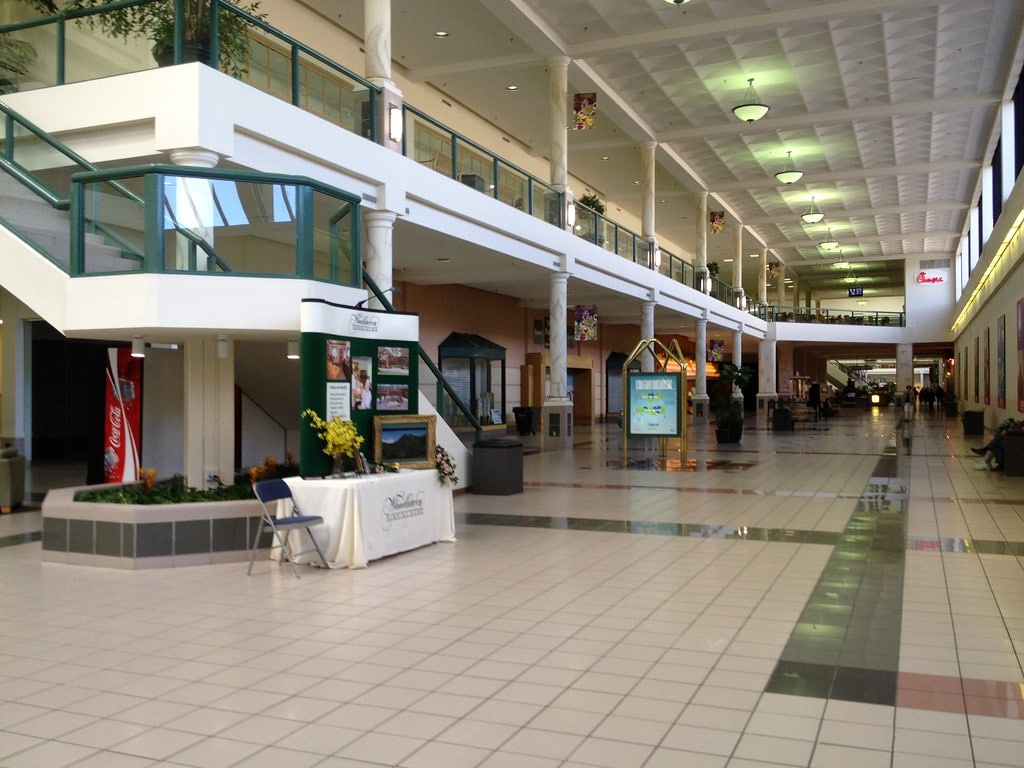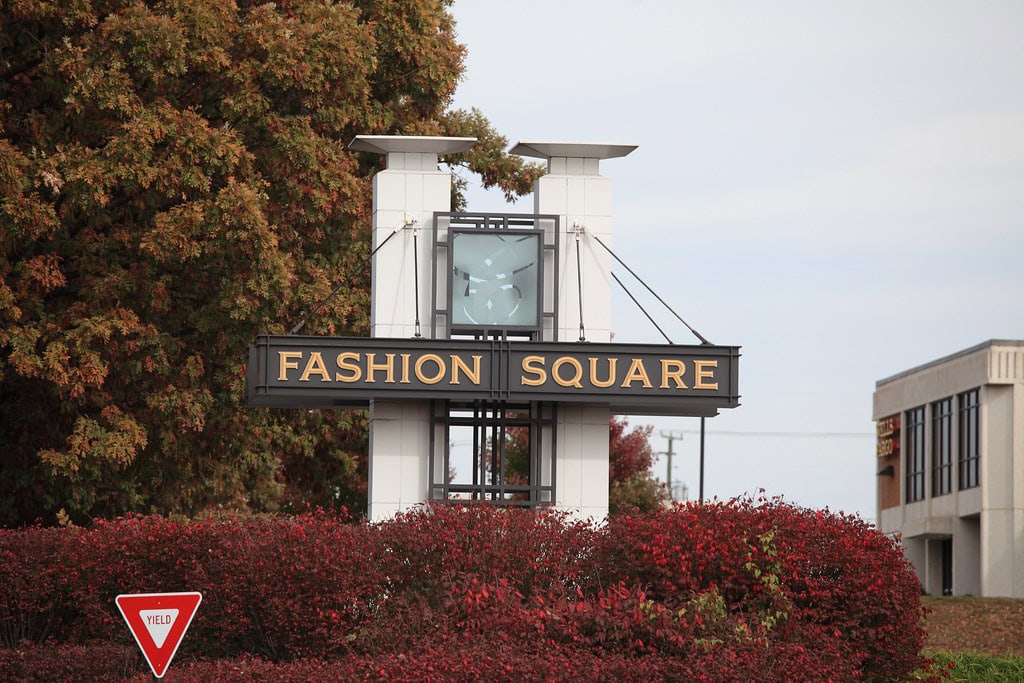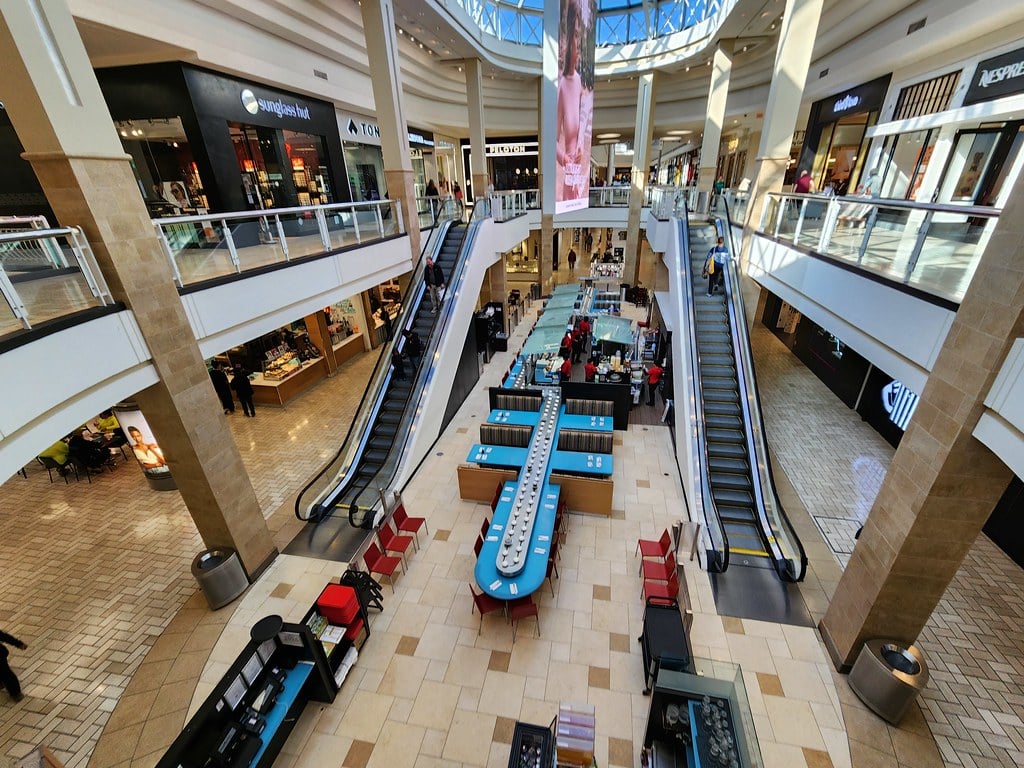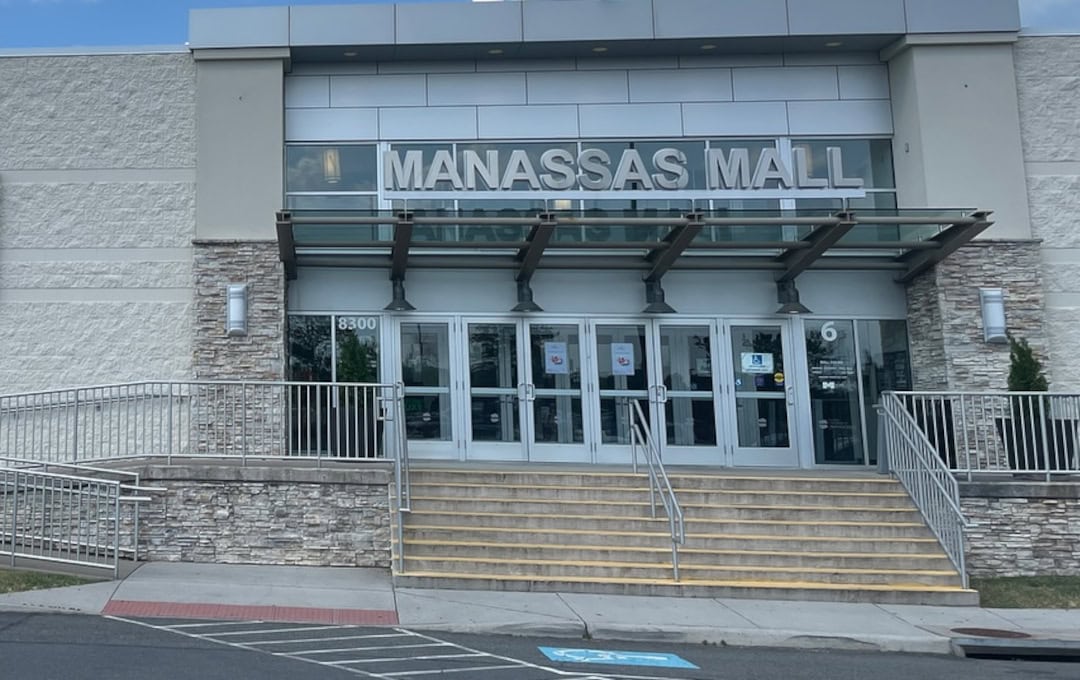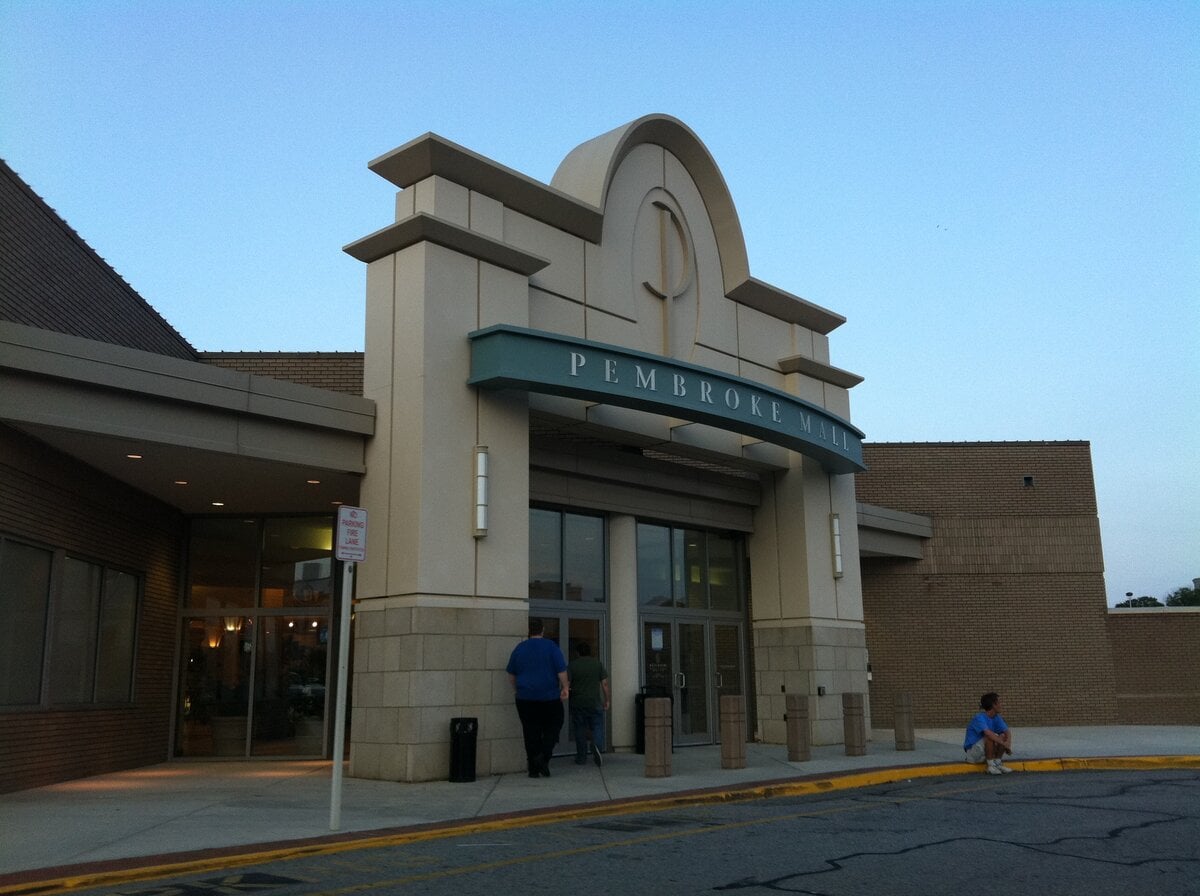Tanglewood Mall Opens in Roanoke, Virginia
On March 28, 1973, Tanglewood Mall opened to the public in Roanoke County, marking a new phase in the valley's commercial growth.
Built for $25 million on 58.6 acres along Route 419, the two-level enclosed mall introduced modern indoor shopping to the region.
Crowds filled its parquet corridors and glass-lined atriums, exploring 658,000 square feet of stores, fountains, and restaurants.
Planning and Conception
Planning for Tanglewood Mall began in 1969, led by developer Thomas D. Steele through his Salem-based Double T Corporation.
Steele, known for creating Crossroads Mall in 1961, partnered with architect T.A. Carter Jr. to design and deliver a large-scale enclosed shopping center for the Roanoke Valley.
Their concept aimed to combine national department stores with specialty retail in a single indoor environment suited to the county's growing suburbs.
Financing and Development
The project moved ahead with significant private financing.
Chase Manhattan Bank committed a $14.2 million construction loan, supported by a $426,000 letter of credit from Mountain Trust Bank of Roanoke.
Construction began in 1971 on land that had served as pasture for a local dairy operation.
By early 1973, the structure and utilities were in place, marking one of the largest commercial investments in the region's history to that date.
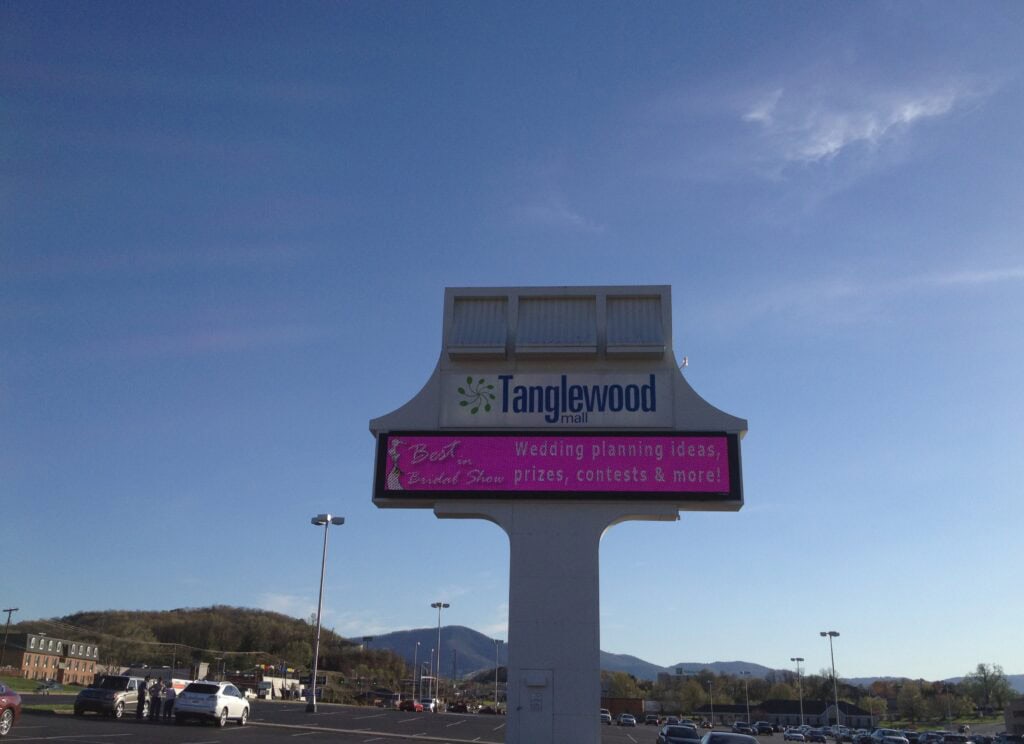
Architecture and Design
Architect T.A. Carter Jr. produced a two-level plan enclosing 658,000 square feet of leasable space.
The design emphasized natural textures and light, with dark parquet wood flooring, tinted glass skylights, and recessed mercury vapor lighting.
Three indoor fountains created focal points throughout the mall.
A distinctive interior area known as the French Quarter introduced boutique storefronts, a gourmet market, and DJ's Brasserie restaurant, all arranged in a European-style setting within the larger complex.
The Opening Event
Mountain Trust Bank was the first tenant, beginning operations on March 19.
The public opening of Tanglewood Mall took place on Wednesday, March 28, 1973.
Three anchor department stores opened in time for the ceremony.
J.C. Penney occupied 129,900 square feet on two levels.
Leggett operated an 83,000-square-foot store nearby, and Miller & Rhoads opened a 35,000-square-foot location closer to the main entrance.
Their simultaneous openings gave the mall an immediate range of national and regional retailers.
Inside, visitors explored the mall's French Quarter section, where smaller specialty shops and DJ's Brasserie restaurant offered a more intimate setting within the modern interior.
By the end of its first day, Tanglewood Mall had established itself as a central feature of the county's growing commercial corridor.
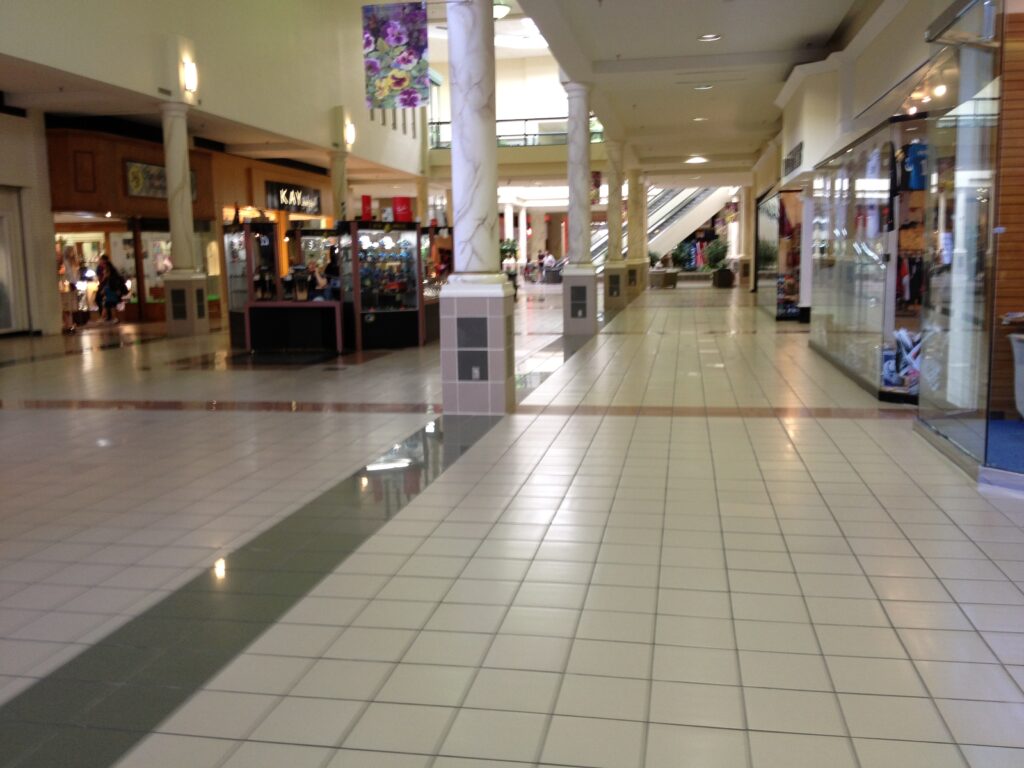
Early Operations
Initial retail openings extended into the following weeks.
Ford's Better Footwear, Waldenbooks, Brooks Fashions, and Singer Sewing Center were among the first smaller tenants to open after the ceremony.
G.C. Murphy joined later that spring, and Woolco completed its 99,500-square-foot store on June 20, 1973.
Parking for 4,000 cars supported the traffic drawn from across southwestern Virginia, and the mall's position along Route 419 made it accessible to both city and county residents.
Transportation and Access
Opening-day traffic reflected the mall's immediate popularity.
Route 419 was still undergoing widening, and visitors reported long delays entering and leaving the site.
These congestion issues eased as the highway improvements were completed later that year.
The mall quickly became a landmark along the corridor, reinforcing the county's role as a growing commercial and residential center.
Civic Context and Economic Role
Tanglewood Mall's completion symbolized Roanoke County's shift toward modern suburban development.
The enclosed structure offered controlled comfort and served as a gathering place as well as a retail hub.
It demonstrated the capacity of regional developers to attract national lenders and anchor stores without outside corporate ownership.
The project also reflected the county's confidence in its own economic direction at the start of the 1970s.

